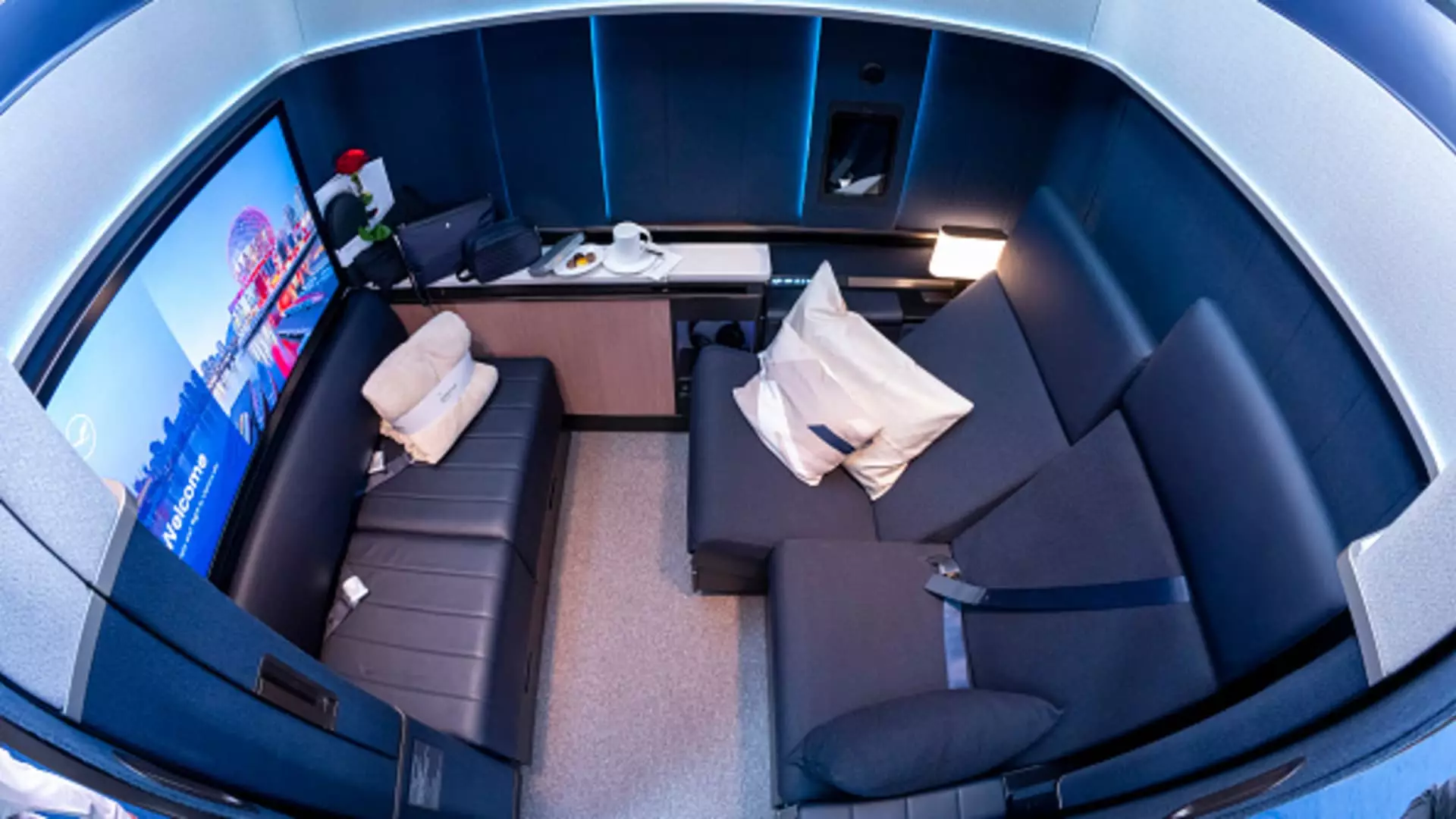As the aviation industry continues to recover from the tumultuous impacts of the COVID-19 pandemic, airlines are increasingly competing for the lucrative premium travel market. The focus has shifted toward providing extravagant in-flight experiences, including heated or cooled seats, spacious benches, and the coveted privacy doors that transform economy-class cabins into luxurious retreats. However, with these innovations come mounting industry challenges, as manufacturers grapple with regulatory approvals and supply chain disruptions affecting the timely delivery of these high-end cabins.
The modern airplane cabin is a marvel of engineering, comprising hundreds of intricate components that must be meticulously designed and assembled before an aircraft can be certified and delivered to airlines. Industry leaders from Boeing and Airbus have raised alarms about delays stemming from the complexity involved in seating and cabin installations. These delays are symptomatic of a larger issue: the industry’s struggle to meet soaring customer expectations while remaining within the constraints imposed by regulatory bodies.
Boeing’s CEO, Kelly Ortberg, noted that the company has several 787 Dreamliners trapped in its South Carolina factory due to delays in obtaining seats, which are usually installed late in the assembly process. According to Ortberg, obtaining certification for seating and fundamental elements like cabinets and doors is a significant bottleneck. Airbus, facing similar frustrations, acknowledged that delays in seat certifications have hindered timely aircraft deliveries. This situation raises questions regarding how eager airlines can remain in promising premium services without dependable supply lines.
Given that commercial aircraft manufacturers typically receive the bulk of payments upon delivery, delays in aircraft completion can lead to substantial revenue losses. Airlines have begun redefining their business models where higher-value offerings, such as premium seats, generate more profit than traditional accommodations. For instance, Delta Air Lines illustrates this stark transition: while a standard economy ticket from New York to Paris might cost around $816, a seat in its elite tier – Delta One – can run as high as $5,508. This stark contrast highlights the growing preference among travelers for comfort and exclusivity, but it also places immense pressure on manufacturers to deliver.
Notably, the industry’s reliance on premium services has gained momentum post-pandemic. Travelers are now more willing to pay for enhanced comfort, which has proven to be a lucrative segment for airlines—57% of Delta’s revenue now emerges from premium seating, representing a significant departure from previous trends. As airlines rush to enhance their offerings, it compels manufacturers to innovate faster, leading to a high-stakes race where the cost of delays could jeopardize long-term partnerships.
The intricate dance between innovation and regulation poses further challenges to aircraft manufacturers. Each new cabin design, including seating configurations and enhancements, must undergo rigorous scrutiny from aviation authorities before they can be deemed airworthy. In recent months, the aviation community has faced the additional difficulties of labor shortages and budget cuts within regulatory agencies, further redlining the path to certification. For example, numerous Federal Aviation Administration employees were laid off recently due to cost-cutting measures, raising concerns regarding the long-term implications of reduced oversight capacity on aircraft safety certifications.
As airlines like Swiss International Air Lines and American Airlines await approvals for new seating and cabin configurations, the impact of regulatory delays becomes painfully apparent. Furthermore, with high-profile carriers like Singapore Airlines announcing revolutionary additions to their fleets, these delays could hinder their ability to stand out in a competitive market.
It’s evident that the aviation industry is at a crossroads. As airlines invest in groundbreaking seating and modern cabin aesthetics to elevate the travel experience, manufacturers must streamline their processes to keep pace. The road ahead might be fraught with challenges, but the potential rewards are substantial, as the demand for premium travel options continues to climb.
The design and delivery of elevated aircraft seating are subject to a unique interplay of factors: regulatory hurdles, supply chain complexities, and evolving consumer preferences. The time has come for innovation to align effectively with the restrictions imposed by the industry’s regulatory framework. Success in the aviation sector will thus hinge on the ability of manufacturers and airlines to navigate these complexities and deliver desirable products swiftly and efficiently. Forward-thinking approaches will not only secure lucrative revenue streams for airlines but also enrich the passenger experience, marking an era of modern air travel defined by luxury and comfort.

